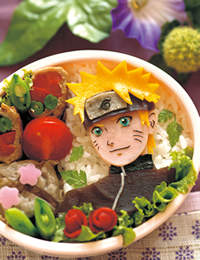niponica is a web magazine that introduces modern Japan to people all over the world.
2015 No.17
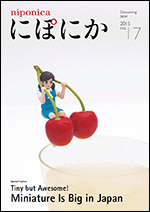
To read the e-book you need to have JavaScript enabled in your browser and a free Flash Player plug-in from Adobe Systems Inc. installed.
 Tasty Japan: Time to Eat!
Tasty Japan: Time to Eat!

Kyara-ben
Fun Lunch Boxes Use Art to Communicate
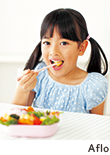
Collaboration: Miyazawa Mari and Suzuki Miho
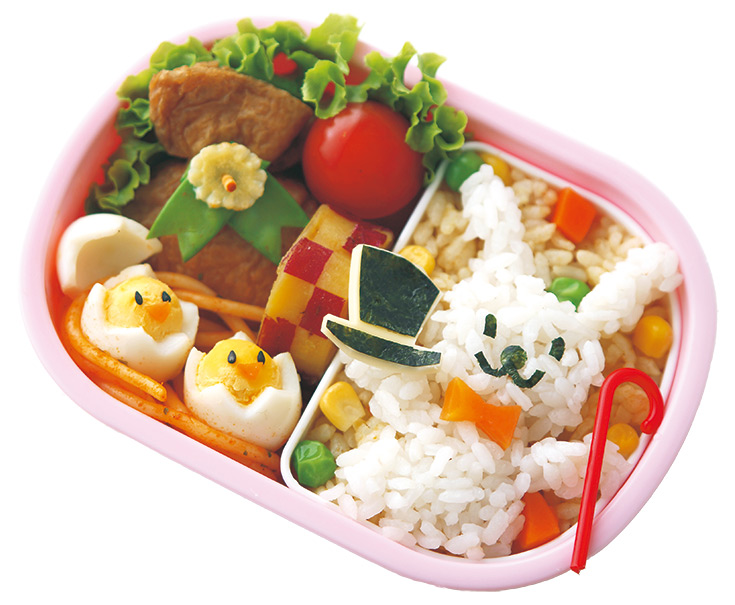
This kyara-ben presents animals made from readily bought ingredients. The rabbit is rice, while the chicks are quail eggs. The faces get their expressions from black sesame seeds and nori seaweed. Black nori tends to absorb moisture and get wrinkled after a while. In order to prevent this, it was placed on thin pieces of cheese.
Animals, dolls, animé and manga characters—they all appear in kyara-ben (short for “character bento”). The characters come from various media, and bento means “boxed lunch.” Quite a few people use food ingredients to come up with elaborate, fun arrangements for family and friends. The “artwork of the day” frequently appears on blogs and social media.
Kyara-ben are made with common ingredients just like other bento, but the rice may be molded into the shape of an animal or media character, with black sesame seeds and nori seaweed for the eyes and mouth. For colors, egg makes a nice yellow, with carrot for orange and cucumber for green. The ingredients are determined by the picture the maker is trying to create. Letters and patterns can be made with, for example, thin slices of ham or cheese. Utensils, like a mold for the rice and a stencil kit for the nori, give the design a finishing touch.
Actually, this type of bento art is not a new or sudden fad. These techniques have been used for more than 40 years. Fancifully sliced wiener becomes an octopus and carved apple becomes a rabbit. And in Chiba Prefecture, the local futo-maki-matsuri-zushi variety of sushi, said to date back to the Edo period (1603-1867), has the ingredients laid out so that when the sushi roll is cut, an illustration appears. These traditions have been practiced for many years in Japanese homes.
Miyazawa Mari has published many books and hosts a website on the subject. For her, the inspiration goes back to 2002, when she began making bento for her family.
“After a while, I got bored making ordinary bento. Then one day I used a cutter to make some flower-shaped carrot slices, and found it quite fun. I tried out different things and became more and more interested. Then I thought that I could keep making bento this way for quite a while.”
Through kyara-ben, the affection and best wishes of the maker are easily conveyed to the eater. Miyazawa believes that kyara-ben is a joyful means of communication between people.
When it looks good, it tastes good too, so even the arrangement and the container require a good deal of thought. One might even say that kyara-ben is a new form of cuisine, yet another branch of the philosophy of washoku, Japanese cuisine.
When the bento covers come off, the children cry out happily and the adults smile. Kyara-ben are a small but inspiring way to add joy to everyday life.
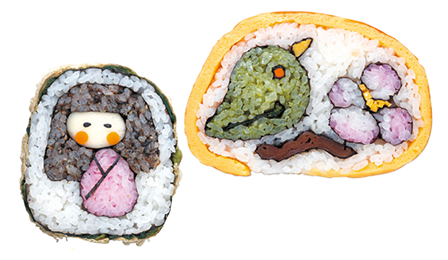
When the maki-zushi roll is cut, flowers and other things appear, thanks to the meticulous arrangement of the rice, vegetable, omelet and other ingredients laid out before everything was rolled. A Chiba Prefecture tradition, called futo-maki-matsuri-zushi. Nori seaweed is often used to delineate the lines. (Photo: Akezumi Kazuhito)
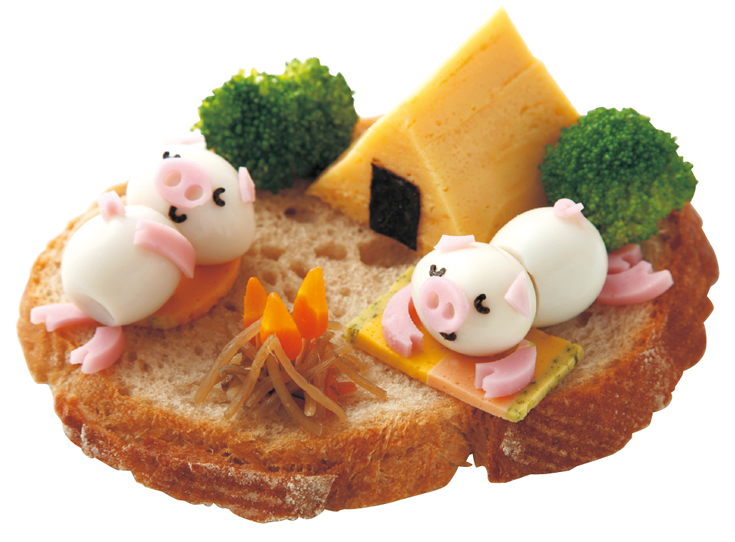
Little piggies made from quail eggs and ham at their camp on a piece of bread. Their tent is a slice of omelet, the trees are broccoli, and the campfire is kinpira-style sautéed carrot and burdock root. Using common ingredients such as these for the lunchbox motivates kids to eat with gusto.



